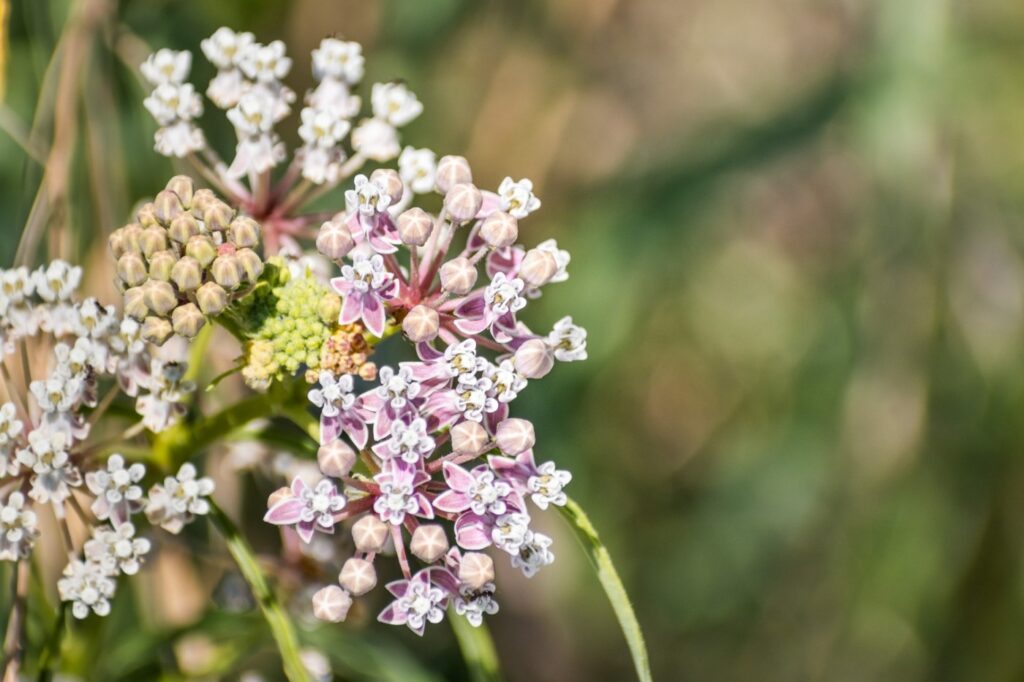
Five things to do in the garden this week:
1. Plant native milkweed now. Although fall planting of California native milkweed is acceptable, if you want to get a jump on next year’s growth, plant now. I was made aware of this recommendation when visiting the website of the Theodore Payne Foundation (theodorepayne.org) in Sun Valley, where I read the following message: “Summer temperatures provide the best conditions to sow milkweed seeds.” At Theodore Payne, you can procure a packet of 270 narrow-leaf milkweed (Asclepias fascicularis) seeds for $6. Plants of this species in 4-inch containers are available for $5. Milkweed goes dormant in the winter so do not be alarmed when its leaves wither and disappear. Milkweed is gifted with rhizomes which allow it to form small clumps. If you carefully dig up such a clump, you can propagate milkweed by cutting off rhizome pieces that have at least one shoot attached and then transplanting them.
2. If you are in search of interesting fall arrangements for your containers but are aware that flowering tapers off at this time, select species whose foliage makes a colorful statement. Some varieties of heavenly bamboo (Nandina) have foliage with multiple colors, especially the compact and dwarf varieties, and many of them turn red with cooler weather. Red-leafed mukdenia (Mukdenia rossii var. Crimson Fans) is a spellbinding option, partial to the shade, whose fan-shaped leaves grow to five inches in length. And then there are the Heucheras, with foliage ranging from gunmetal blue to red to purple to lime green to amber. Certain Euphorbias and Coprosmas also have variegated foliage sporting a wide spectrum of colors.
3. As September arrives, so do bulbs for fall planting. The quality goes down with time, so plant them now. Make sure the bulbs you select at the nursery are solid; any soft spots indicate deterioration and inferior quality. Also, the larger the bulbs, the better the chance of their blooming the first year they are in the ground. However, even if they don’t bloom the first year, they are likely to do so the second. Of course, there are many online bulb vendors, and you can certainly order from them as well. Be aware that the quality of their bulbs will also deteriorate with time and many of the more exotic bulbs will sell out quickly. Bulbs that require refrigeration should definitely be ordered now since you will need at least six weeks to refrigerate them (in paper bags) prior to planting. In truth, even daffodils, narcissus, Dutch iris, and amaryllis, which do not require refrigeration to bloom, will produce more flowers when provided with a period of chilling. You can extend refrigeration for up to three months or longer, as bulbs’ flowering potential increases with the length of vernalization – the scientific term for exposure to cold which promotes flowering. Just keep your bulbs in the refrigerator – and not in the freezer.
4. Plant every imaginable leafy vegetable now, including lettuce, cabbage, bok choy, mustard greens, kale, arugula, chard, and collard greens. To this list, you can add a plethora of veggies for the fall garden including cauliflower, broccoli, Brussels sprouts, celery, leeks, onions, carrots, radishes, and turnips. Remember that if you plant from seed – except peas, radishes, and carrots which should be germinated directly in the ground – it is advisable to do so in cell trays with a heating pad underneath and a humidity dome on top for speedy germination, after which you can harden plants off for two weeks in partial sun outdoors (while still in their cells), before transplanting into the vegetable garden, which should have full sun exposure if possible.
5. Broadcast seeds of love-in-a-mist (Nigella damascena). In the fall and winter, as this annual plant develops, it will show off finely laced light green leaves that approximate those of carrot, cilantro or fennel (it’s sometimes called “fennel flower”) but also resemble the ferny foliage found in the Ranunculus or buttercup family, of which it is a member. Love-in-a-mist flowers, which appear in spring and summer, are delicately serrated spinning disks in either white, rose or pale blue, the latter color most typically seen. Flowers are followed by diaphanous seed capsules that resemble exotic globe-shaped paper lanterns. Despite being an annual, love-in-a-mist seeds drop from their capsules in late summer or early fall. If immediately watered, the seeds germinate with the first fall or winter rain. Within a few years, love-in-a-mist will spread, through dissemination of its seeds, over large areas that are exposed to full or partial sun. The hotter the summer, the more it will benefit from sun protection and a weekly soaking.
Please send questions and comments to joshua@perfectplants.com.
Related Articles
5 tips for reassessing your home space when your child leaves for college
These golden flowering trees include fragrant, drought-tolerant varieties for your garden
Sudden branch drop syndrome: What you need to know
5 things to do in the garden this week: Watering and weeding
What happened to all the birds? They’re hiding out to molt
